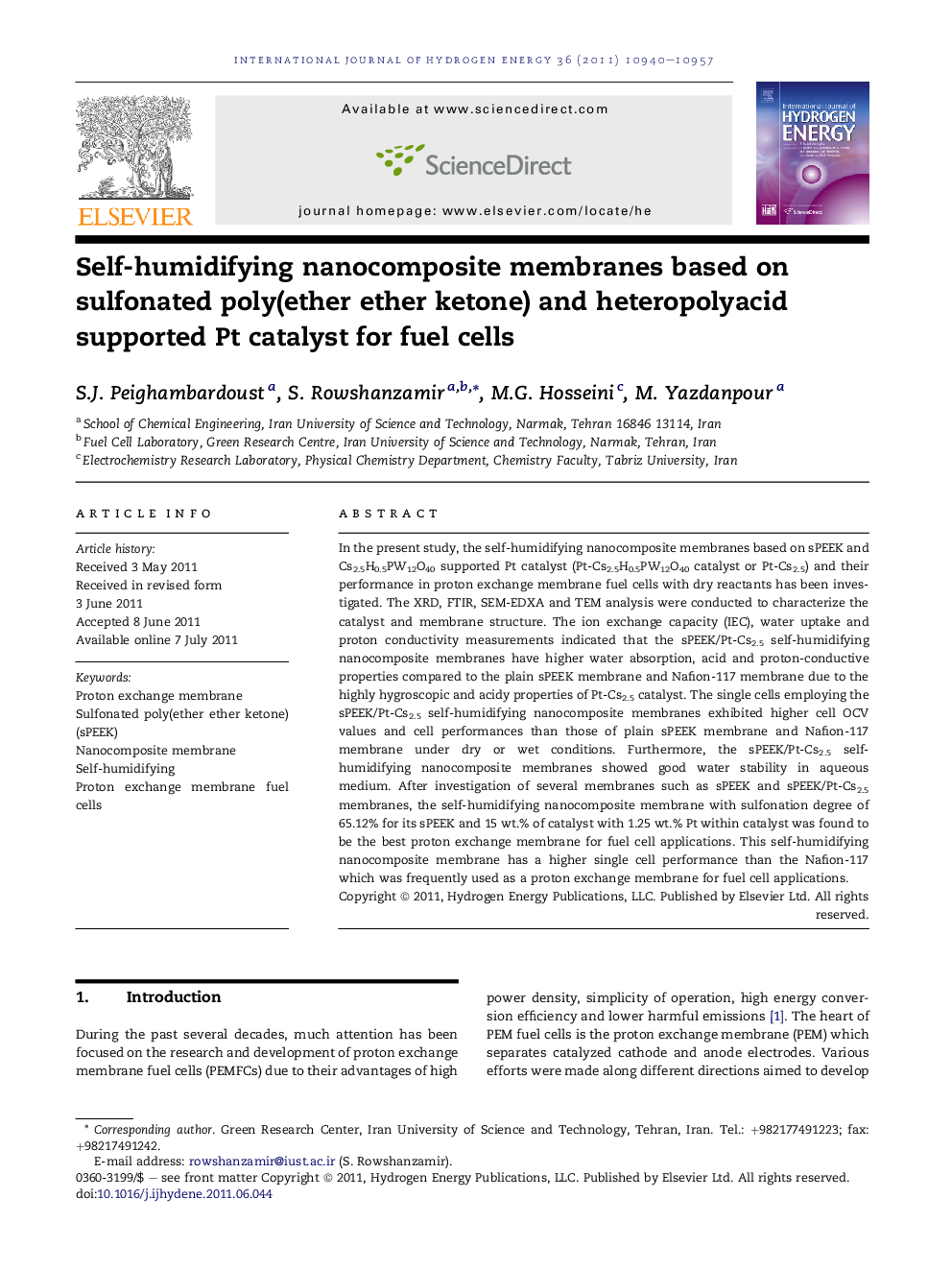| کد مقاله | کد نشریه | سال انتشار | مقاله انگلیسی | نسخه تمام متن |
|---|---|---|---|---|
| 1277564 | 1497576 | 2011 | 18 صفحه PDF | دانلود رایگان |

In the present study, the self-humidifying nanocomposite membranes based on sPEEK and Cs2.5H0.5PW12O40 supported Pt catalyst (Pt-Cs2.5H0.5PW12O40 catalyst or Pt-Cs2.5) and their performance in proton exchange membrane fuel cells with dry reactants has been investigated. The XRD, FTIR, SEM-EDXA and TEM analysis were conducted to characterize the catalyst and membrane structure. The ion exchange capacity (IEC), water uptake and proton conductivity measurements indicated that the sPEEK/Pt-Cs2.5 self-humidifying nanocomposite membranes have higher water absorption, acid and proton-conductive properties compared to the plain sPEEK membrane and Nafion-117 membrane due to the highly hygroscopic and acidy properties of Pt-Cs2.5 catalyst. The single cells employing the sPEEK/Pt-Cs2.5 self-humidifying nanocomposite membranes exhibited higher cell OCV values and cell performances than those of plain sPEEK membrane and Nafion-117 membrane under dry or wet conditions. Furthermore, the sPEEK/Pt-Cs2.5 self-humidifying nanocomposite membranes showed good water stability in aqueous medium. After investigation of several membranes such as sPEEK and sPEEK/Pt-Cs2.5 membranes, the self-humidifying nanocomposite membrane with sulfonation degree of 65.12% for its sPEEK and 15 wt.% of catalyst with 1.25 wt.% Pt within catalyst was found to be the best proton exchange membrane for fuel cell applications. This self-humidifying nanocomposite membrane has a higher single cell performance than the Nafion-117 which was frequently used as a proton exchange membrane for fuel cell applications.
► Promising membranes such as self-humidifying membranes for PEMFC applications.
► Higher proton conductivity for self-humidifying membranes than other plain membranes.
► Higher OCVs and performances for self-humidifying membranes than other plain membranes.
► Avoiding of short circuit by addition Pt-Cs2.5H0.5PW12O40 catalyst into membrane.
Journal: International Journal of Hydrogen Energy - Volume 36, Issue 17, August 2011, Pages 10940–10957